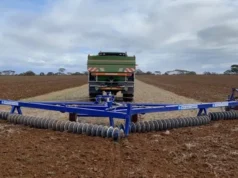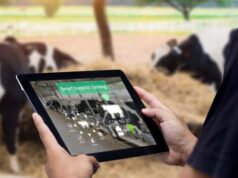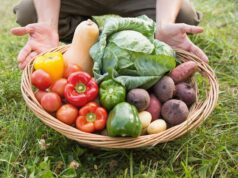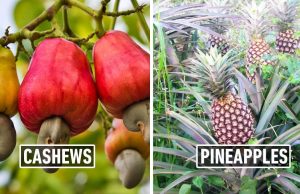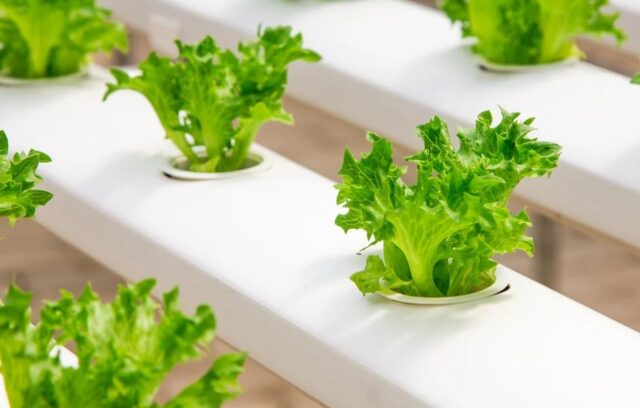
Traditional farming that you know of uses soil as the base. Soil is both scarce and a costly substrate. Crops grown on soil beds are susceptible to hundreds of different organisms, which can potentially harm the crop.
These organisms can be harmful to the crops and affect their yield. The use of pesticides adds unwanted ingredients to the food chain. Farmers use genetically modified organisms or GMOs to tackle this issue. But the resultant mix of factors only contributes to an increased cost of farming.
The rise of animal rearing and urbanization has led to the rapid shrinking of the farmlands to grow food for human consumption. It calls for the evaluation of alternatives of soilless farming and improvement in per acre yield.
Hydroponics
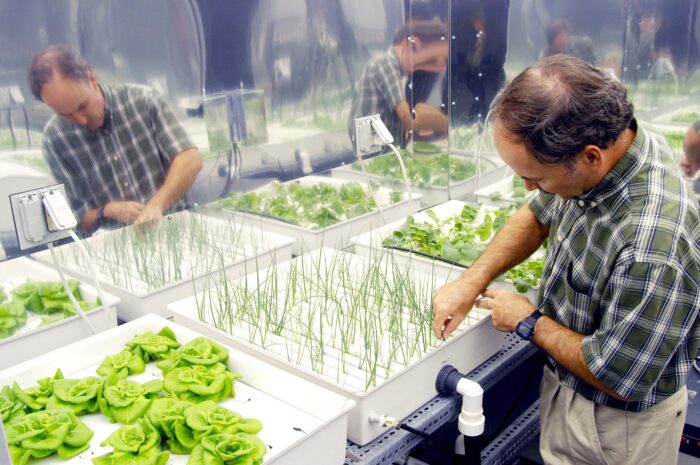
Nutrient-rich water makes the base in place of the soil. The growth of the Hydroponic systems attributes to the higher yields of plants vis-a-vis the Traditional ones. The best use of space by vertical stacking of crop beds helps increase the yield manifold.
The nutrient solution circulates through the system to help all the plant roots receive nutrients for growth. The plants suspended in water absorb the nutrients directly. The water passes through biofilters and recycles back to the system, and stores in a reservoir.
The increased awareness of Hydroponics has resulted in more people opting for small setups in their backyard. The DIY kits are handy in this regard, and if you want to try your hand on them, click here.
Most of the common vegetables can be grown on a Hydroponic system. A small-sized Hydroponics unit can cater to the needs of a small family of 2 to 4. The principal aspect is that the grown vegetables are free of harmful pesticides. So, your intake has the least or no traces of unwanted ingredients in them.
Hydroponic systems use ten times less water compared to traditional farming. These farms no longer need to spend any irrigation money like the Traditional farms to sustain themselves.
Aquaponics
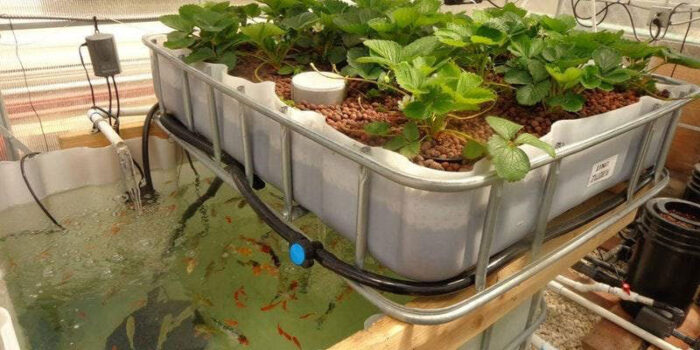
A natural ecosystem forms the base for this technique. The system uses the Nitrogen Cycle to transfer nitrogen from one state to another. Aquaponics refers to the use of fishes to produce the nutrients required by the plants.
To create an Aquaponics system, you need to have a tank with fishes (Tilapia is the most common breed in use) and a nutrient water bed with vegetables. Aquaponics is a recirculating ecosystem. The rapid growth of Aquaponics is because of the simultaneous culture of both fish and plants.
A natural bacteria cycle converts the fish waste to nutrients for the plant. The biofilter beds help convert the Ammonia and the Nitrites to Nitrates. The water with the Nitrates goes to the water beds, where the plants absorb the Nitrates as nutrients. The water is then recycled back to the fish tank to repeat the process.
Aquaponic systems use 90% less water compared to traditional methods and two-third of Hydroponics. The many recycling of water in the system leads to the least water wastage, thereby is environment-friendly.
Aeroponics
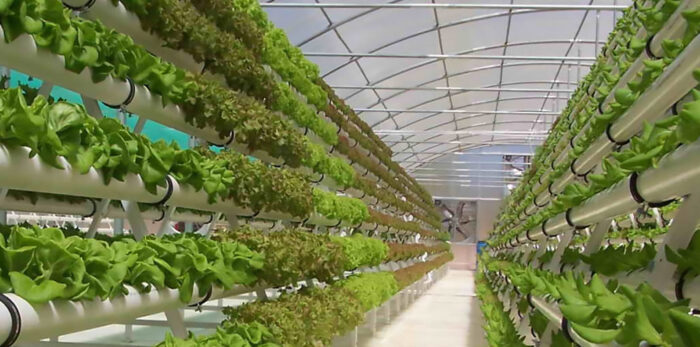
Aeroponics is an advanced method of Hydroponics culture. The use of air or a moist environment to grow vegetables without soil or any other substrate.
The system uses drip technology to help the plant roots absorb the nutrients. The water with the nutrients recycles with the help of a pump. The droppers at the top of the vertical towers release the nutrient water, leading to slow downward percolation.
The use of vertical towers for farming helps save a lot of farm space and leads to a drastic increase in the yield per acre. Small vertical Aeroponic systems at home can fulfill your family’s leafy vegetable needs.
So next time, when you crave that favorite salad of yours, you can pluck a few leafy vegetables from the small Aquaponics set up inside your kitchen. How cool is that!
Restaurants Join the Bandwagon Too
With the rise of the farm-to-table movement, technology-enabled solutions are changing the way restaurants procure fresh produce.
Out of shipping containers or rooftops, indoor farms in urban areas are popping up across the world. The farms are producing everything from microgreens and green leafy vegetables to regular vegetables.
The farm produce is reaching the restaurants within hours of harvest and is available all year round. There is no impact of changing climatic conditions or worry for pest infestation.
These farms use hydroponic, aquaponic, or aeroponic systems. Some make use of controlled sunlight via greenhouses, while others use LED lighting. The indoor cropping cycle can repeat every week, unlike the traditional one.
These urban farms strictly monitor food safety from the seed germination stage to restaurant delivery. It restricts contamination, which is not possible on traditional farmlands.
Erik Oberholtzer the co-founder, and CEO of Tender Greens, is one of the early adopters of this concept. He envisions a network of farmers, distributors, and restaurants in place very soon. Such an ecosystem will transform communities and create jobs by reactivating long-unused dormant mill spaces in urban areas.
The way we think of food and relate to the techniques of producing it is fast changing. The ones who are staunch supporters of traditional farming will soon see merit in hydroponic and aquaponic systems. These new Urban Farming methods are on the rise and will only grow further in the coming days.
Start your small in-house garden right away with a DIY kit and enjoy the fresh produce without any additives and chemicals. Now you can have any food as per your choice, that too from your farm.
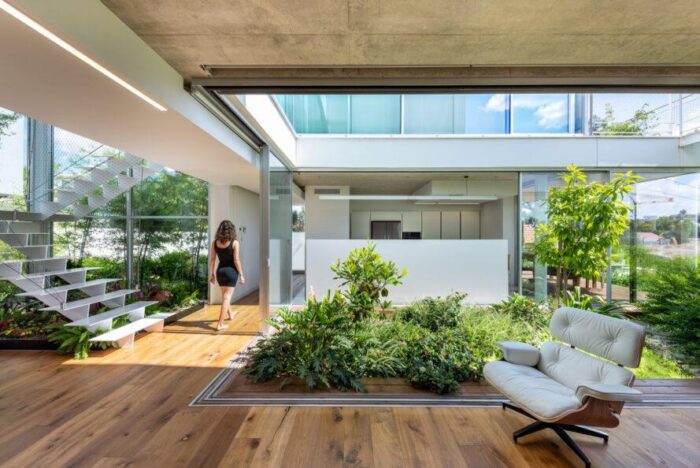
The scanty soil availability and the heavy investment that it demands to make it suitable for farming are the key deterrents. A lot of agricultural start-ups are creating new avenues to increase productivity through these alternative farming techniques.
The growth of the concept of Farm To Table is the main driver for alternative farming methods. The reason being people are opting for healthier choices without additives. A farm set up in the middle of the city can deliver the farm produce within a few hours of harvesting and hence won’t need any preservatives.


